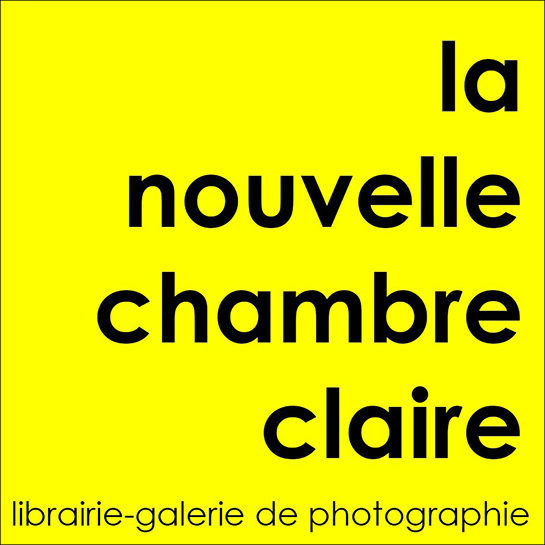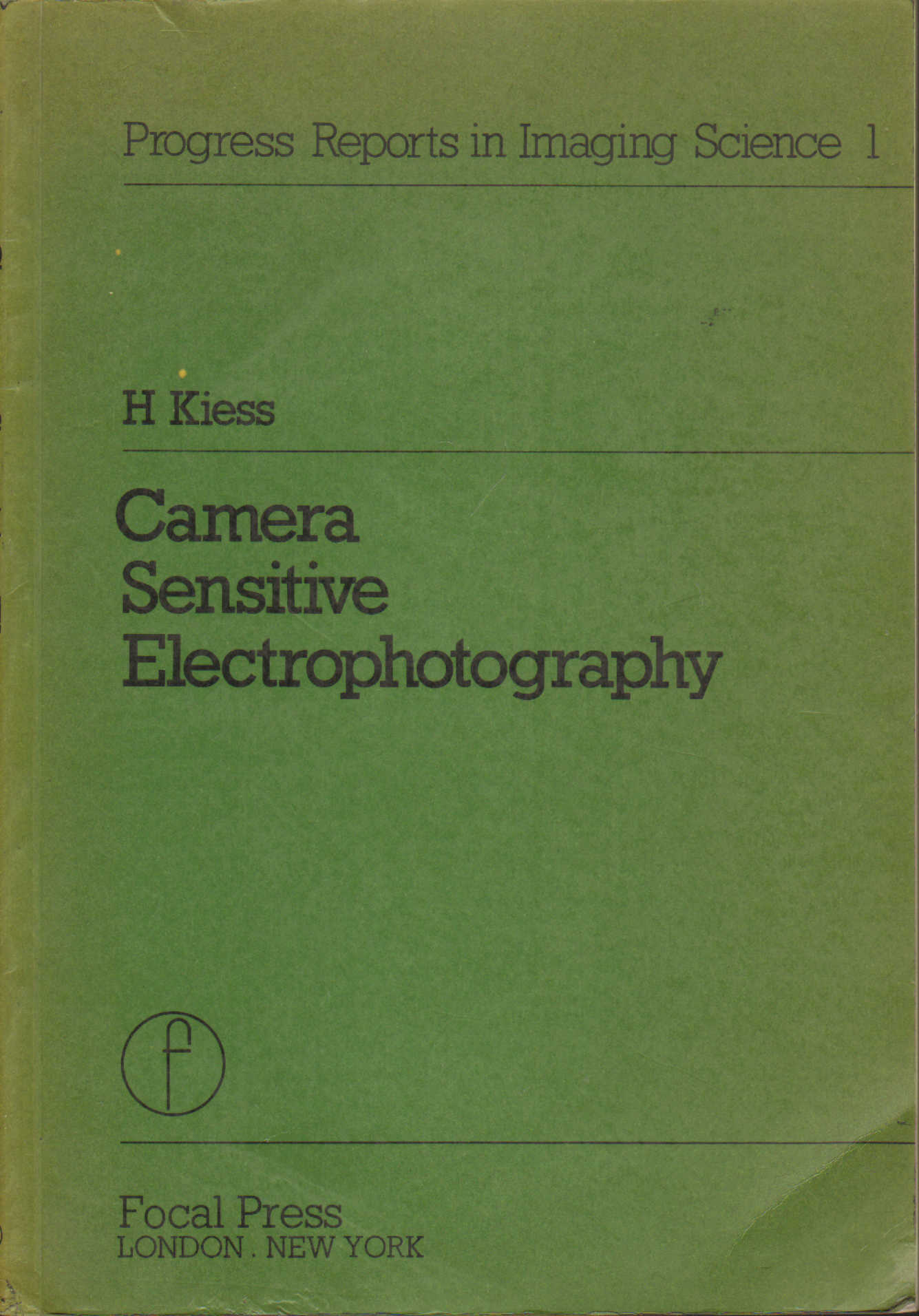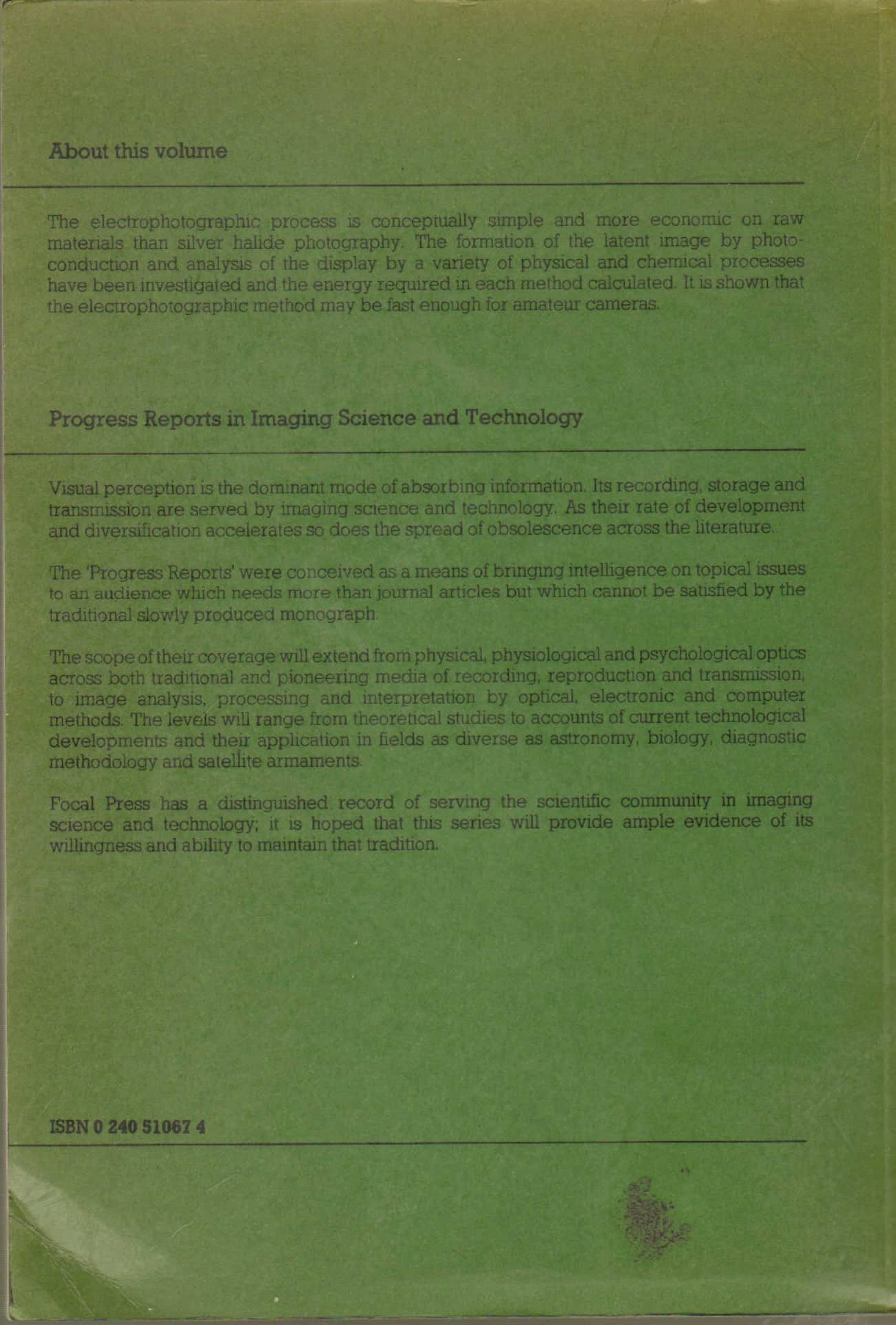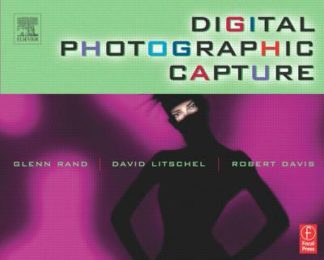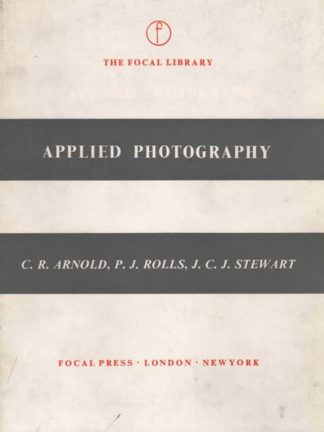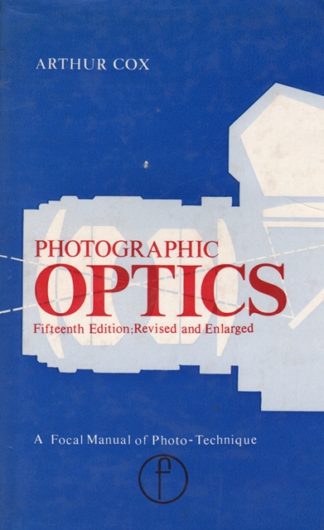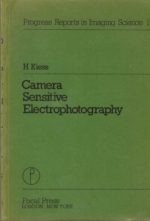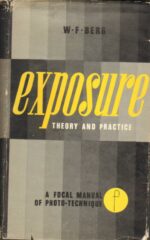Livre Épuisé.
Exemplaire avec marque d’usure et marque d’étagère sur la tranche de queue, Coin inférieur légèrement corné.
Intérieur comme neuf.
Le processus électrophotographique est conceptuellement simple et plus économique sur les nouveaux matériaux que la photographie aux halogénures d’argent. La formation de l’image latente par photoconduction et l’analyse de l’affichage par divers processus physiques et chimiques ont été étudiées et l’énergie requise dans chaque méthode calculée. Il est montré que la méthode électrophotographique peut être assez rapide pour les appareils photgraphiques amateurs.
SOMMAIRE :
– 1. Introduction
– 2. A Comparative study of various display schemes for electrostatic charge patterns
– 2.1. Characterizing parameters, physical and chemical effects for displays
– 2.2. General formulation of the problem
– 2.3. Change of optical properties
– 2.4. Deformation of surfaces
– 2.5. Electrochemical reactions
– 2.6. Electronic display
– 2.7. Movement of particles
– 2.8. Summary and comparison of the displays
– 3. The Efficiency of Photoreceptions in Electrophotography
– 3.1. Introduction
– 3.2. Efficiency and photocurrent
– 3.3. The Photogeneration of charge carriers
– 3.4. Transport Effects
– 3.5. Transport in semiconducting photoreceptors
– 3.6. Parameters of materials suited for highly efficient photoreceptors
– 3.7. Photoreceptor and display system
– 4. An experimental study of the Electrophotographic process
– 4.1. Introduction
– 4.2. CdSe as a Photoreceptor for Electrophotography
– 4.3. Charge transfer to insulating films
– 4.4. Results with an experimental camera
– 4.5. Summary and Discussion
– REFERENCES
The electrophotogrphic process is conceptually simple and more economic on new materials than silver halide photography. The formation of the latent image by photoconduction and analysis of the display by a variety of physical and chemical processes have been investigated and the energy required in each method calculatedL It is shown that the electrophotographic method may be fast enough for amateur cameras.
